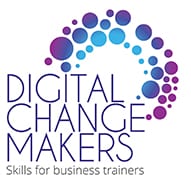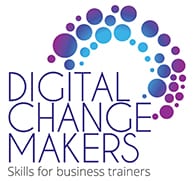2.2 The Benefits of Collaborative Mentoring & Virtual Collaboration
Collaborative learning works on the principle that multiple people learn from each other when they are together; this can include singular/multiple Mentors and singular/multiple Mentees but must include at least one Mentor. Everyone learns from each other to develop their knowledge and skills. The emphasis is on achieving a common goal whether it is completing a task, solving a problem or designing a product.
Collaborative learning can also exist between multiple Mentors only and can result in a more educated, skilled, informed and engaged Mentor. The rule is as long as there are at least two individuals or a whole group of Mentors. It reduces the need for formal training and provides a more flexible, active and engaging learning approach.
A collaborative mentoring approach enables the Mentee(s) to seek assistance from a variety of individuals depending on how diverse and how strong their needs are. Having a more diverse collaborative set of mentors provides more effective support, opportunities and allows a diversity of perspective for the Mentee(s). Collaborative Mentoring benefits both parties in the relationship. The Mentee receives help and direction, but the Mentor also benefits. Sometimes the benefit comes from reverse mentoring e.g. seniors view of leading an organization traded for learning a technical program from someone in a lower position.
 The Benefits of Collaborative Mentoring?
The Benefits of Collaborative Mentoring?
- an active process, a challenge that requires learners to actively engage with their peers
- includes data processing. You sift through the knowledge you have already acquired and choose the relevant info to use in problem solving debates/discussions
- more about processing and synthesising information rather than simply memorising and regurgitating it
- diverse and fluid and sees the learner benefit from being exposed to different viewpoints from people with varied backgrounds
- is rooted in a social environment where conversation between learners takes place
- when applied appropriately, collaborative learning can lead to deep, knowledge or transformative learning
- can also directly support the development of a range of high-level intellectual skills, such as critical thinking, analytical thinking, synthesis, and evaluation, which are key requirements for learners in a digital age
Virtual Collaboration
Virtual collaboration is defined as collaboration, which is conducted without face-to-face interaction, enabled by technology. Online collaboration is becoming increasingly important in today’s workplaces and the mentoring world as we become more connected and digitally connected than ever before. Collaborative learning is much easier today due to advances in technology, high speed broadband, file sharing, video conferencing and project management. A virtual collaborative space therefore is an online place where virtual collaboration is facilitated. In the DCM Toolkit we introduce you to a number of tools that can be used to collaborate online. Here is a reminder of some of the tools
49% of employees think instant messaging tools increase team collaboration
You need to find the best Online Collaboration and Project Management Tool. In Module 4: Project Management you will learn how to use an online Project Management and Collaborative Platform (Monday.com). Digital Change Makers researched a variety of different platforms to find the one that’s ideally suited to you and your needs. Pay close attention to the user interface and top features all fully explained in the Monday seminars.
The Benefits of Virtual Collaboration
It develops skills and knowledge by sharing ideas and working closely together participants learn each other’s skills, how each other think and operate. The more communication the more learning and understanding. For example, when more communication is encouraged between departments in a collaborative manner, they can understand better how the whole organization works.
It improves relationships with the rise of remote working either as a business or a team, collaborative learning allows people to foster better relationships and retain a strong sense of community with others. Project Management collaborative platforms are great for this (Monday is explained in Module 4). For example, if someone is working on a particularly challenging task, they can get instant guidance and feedback by collaborating with their team.
Enables everyone to take part Some people don’t take part so easily because they are shy or afraid to speak up in a group. Collaborative learning gives space for everyone involved to contribute naturally to the process either by speaking, submitting their opinion or input online or providing information that may be beneficial
It solves a problem faster a problem that may take one person two weeks to solve on their own may only take a matter of hours in a collaborative environment. When you have access to a wide pool of talent with unique skill sets and perspectives, you’re more likely to find the answer than when working alone.
It appeals to Generation Y Millennials have grown up with technology that means they’re always connected. They also rely on it to do their jobs better. For that reason, they tend to gravitate towards organizations that work in a collaborative way.
Better staff attraction and retention by applying this style of learning to your business, you can market yourself as a forward-thinking workplace. Collaboration is also a good way to retain staff as it increases employee engagement and morale.
Better collaboration can lead to better staff retention
It helps employees and new employees get up to speed new recruits learn best from their co-workers and line managers. A culture of collaboration will help to put them at their ease from the get-go and smooth the onboarding process. For example, collaboration nurtures the mentor-mentee relationship between new employees and their more experienced colleagues. The mentor can learn too – as the mentee might spot a better way of doing things that the organization hadn’t thought of before.




